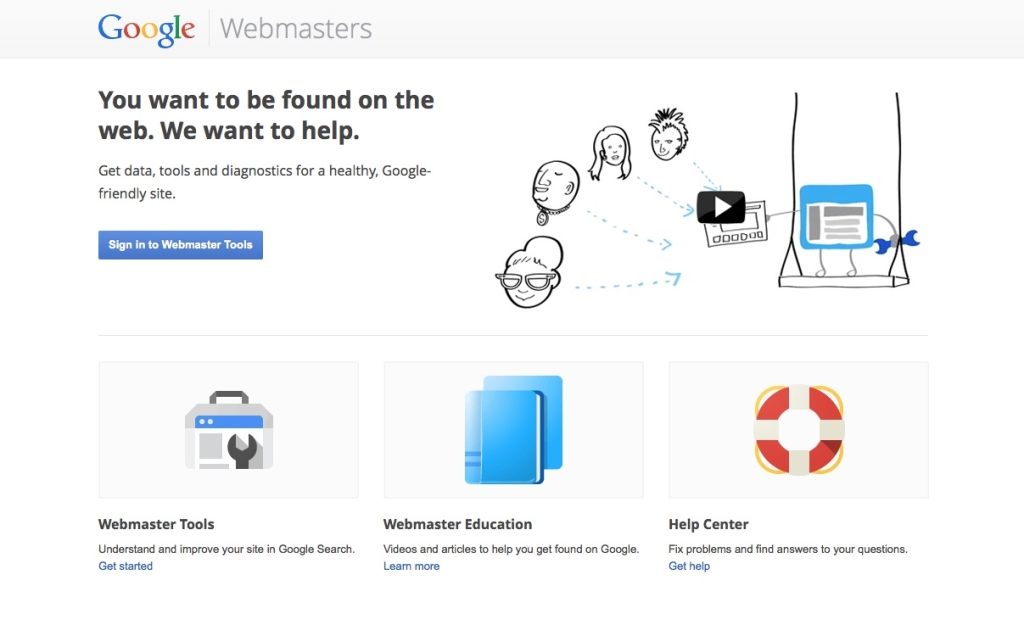The world of Search Engine Optimisation (SEO) is complex and like many elements of digital media it is always evolving as Google and other search engines tweak their algorithms to ensure relevant content is delivered to users. It’s something you need to continually monitor and tweak and can’t just set and forget.
Whilst optimizing your site for SEO is a specific skillset in itself and requires time and resources to do properly, there are some basic things that you can be doing to ensure you’re capturing as much organic website traffic as possible. It’s definitely worth allocating some time to ensuring that you have the basics right. This will drive incremental traffic to your website for people looking for content that is relevant to your brand.
1. Enable Google Webmaster Tools
Ensuring that you have Google Webmaster tools enabled on your website will give you advanced insights into how your website is performing – whether links are broken, whether your website site maps are enabled, what keywords are being searched for etc.
This costs you nothing to do except the time to verify your site.
To start:
- Sign in to (or create a new) Google account
- Open Webmaster Tools
- Verify ownership of your site – you have a number of options to do this
- Once ownership of your site is verified, log back into Google and go to Webmaster Tools to see the results and be able to determine elements of your page that need fixing.
2. Fill in the Meta Tags and Meta Descriptions properly
This is THE most important part of making sure that the content on each page is easily found as it’s what the search engines read to determine what the on page content is about.
The optimal length for the Meta Tag Title and Description is as follows:
- Title Tag – 50-60 characters – preview your Meta Title here
- Meta Description – 150 to 160 characters including spaces
- Check the ideal length of your Title Tag and Meta Description through tools like Metalength
- Do not repeat heading tags on different pages of your site. It is a good practice to have unique heading tags throughout your site.
- Do not use the same content in your page’s H1 tag as in your Meta Title tag.
3. Name your images correctly
When you update your blog or your website it’s worth spending a couple of extra minutes naming the images that you use correctly as these are read by Google. Instead of using generic name like img1234.jpg rename it to be specific – eg MastermindChardonnay2011.jpg
Think about what your customers might search for and look at your Google analytics to see what terms customers are commonly using to help guide your naming conventions.
4. Plan content around keywords
Google has a useful keyword planner to help you understand what words are being searched for most and then plan content around this. It’s about making sure that you have relevant content that people are searching for to help with your organic ranking.
Whilst typically used for planning adwords campaigns, the Google Adwords Keyword Planner tool is also very useful in content creation when thinking about the type of information people are looking for.
This is often the place where people start with their SEO efforts – identifying keyword analysis to understand what the greatest opportunities are and then creating content around this insight.
5. Effectively leverage your brand Blog
Whilst brands often question the value of a blog, this is an important way to continue to provide content and increase your SEO presence.
An up to date blog also shows visitors that you are actively engaged in the industry, an authority on the subject matter and you are there to contribute and not just to sell products.
Implementation:
- Ensure each page has a minimum 250 words of text
- Ensure content is unique & useful to the reader
- Fill in the appropriate tags on the pages in the CMS – leverage the keywords effectively so that the search engines can find the content
- Consider adding more social sharing buttons and make them more visible on the product pages
OTHER SEO RESOURCES
The world of SEO continues to evolve, here’s a couple of reference sites that help to keep you up to speed with changes taking place:








